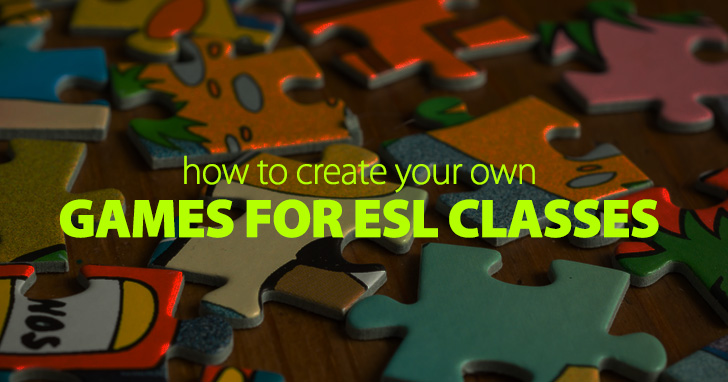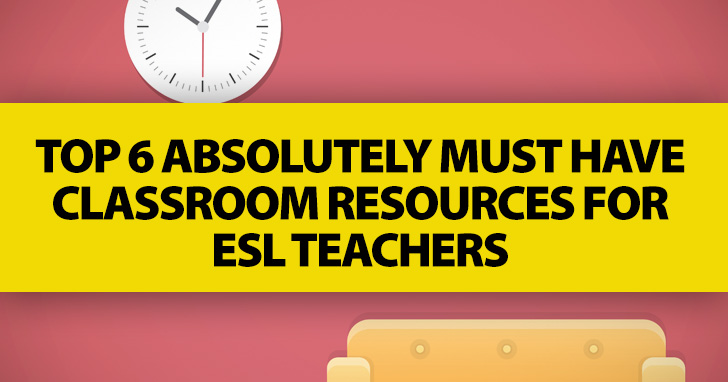How to Create Your Own Games for ESL Classes


For some, games are essential. For others, shelves of books line the walls. Still others keep a stash of stuffed animals or have a computer center. While all of these things are good, most of us don’t have a big enough classroom to fit everything in it and still hope to have room for our students. Still, some things are just essential for every ESL teacher. If you are in the process of choosing what should go into your classroom, here are ten things you just have to make room for.

Odds are, your classroom will come equipped with either chalk boards or white boards along at least one wall. If they don’t, you should absolutely go out and get the biggest one you can find. White boards are irreplaceable for the ESL teacher. Not only can you write on them as you teach (and you should always present information to ESL students both orally and in writing), they can be used for tons of classroom activities.
No matter what other books you include in your classroom, make sure you save a shelf for a class set of English only dictionaries. Some students may bring their own dictionaries to class every day, but even those who do will more likely than not have a bilingual dictionary. English only dictionaries are super useful for teaching new vocabulary. They can also be useful for helping students understand pronunciation and spelling rules. Some dictionaries have sections in the back which list rhyming words (good for teaching listening and phonetics), and some list synonyms and antonyms for every word entry. If you have a little more space in your classroom, include a class set of thesauruses as well, since they are great for vocabulary instruction, too. And if you have a little more room in your budget, spring for a good set of electronic dictionaries, still English only.
These simple resources don’t take up much room in your classroom at all, and they are a handy ESL teaching tool. You can use index cards to make tons of materials for all kinds of instruction in your classroom. Index cards are great for making vocabulary flash cards, games (such as go fish and memory), notes for in class presentations, story starters, question reviews, and so many other things. Once you see how useful index cards are in your classroom, you are sure to agree they are worth buying in bulk.
Old magazines are a versatile tool for the ESL teacher. Depending on the level your students are at, you can use magazines in a variety of ways. For beginning students, magazine pictures are great for teaching vocabulary or for asking and answering simple questions. Intermediate students can use article titles to learn vocabulary or get writing ideas from pictures in the magazines (ads are great for this). Advanced students should be able to read articles in the magazine and learn vocabulary and writing style. All students can describe the people they see in magazine pictures, and of course magazines are great for all kinds of craft projects.
Have you realized yet how many uses an ESL teacher has for sticky notes in the classroom? They are great for leaving notes of encouragement for your students – just write a small note after the school day is through and stick it to the student’s desk. But that’s not all they are good for. If you keep a pack of sticky notes handy during class, you can write notes about student performance, class participation, or other items you assess during class. They are great for making notes that will later be on report cards. Sticky notes are extremely useful for your students, too. They can use them to mark questions as they read without stopping the entire reading process, and they can make note of unfamiliar words or confusing grammatical constructions.
Everything is more fun when it is a game, isn’t it? And dice are a great way to make an in class language activity feel just like a game. If you can, white board dice are the most useful. They give you the most flexibility. You can write vocabulary words on them for learning and reviewing activities. You can write verb tenses or other grammar points on them for review games, or you can draw pictures on them to challenge your students’ creativity and ability to tell a story. If you can’t get white board dice, regular six sided dice are still extremely useful. Use them for playing student made board games or for print and go games in your classroom. Standard dice are also good for conversation activities when students answer a question based on the number they roll. With a little creative thought, you can use dice in dozens of ways in your classroom, so make sure you have one (or multiple) sets in a drawer ready to be used at any time.
The longer you teach, the more you will realize what you need in your own classroom. Your personality will be sure to show through with the materials you keep on hand. And if you teach only one portion of English (listening or conversation or grammar, etc.) you may find that you need certain items at hand and others you can do without. Whatever you ultimately decide, think about keeping these six items on hand. They are a set of tools for you to teach, and most of them are easily included in your classroom.